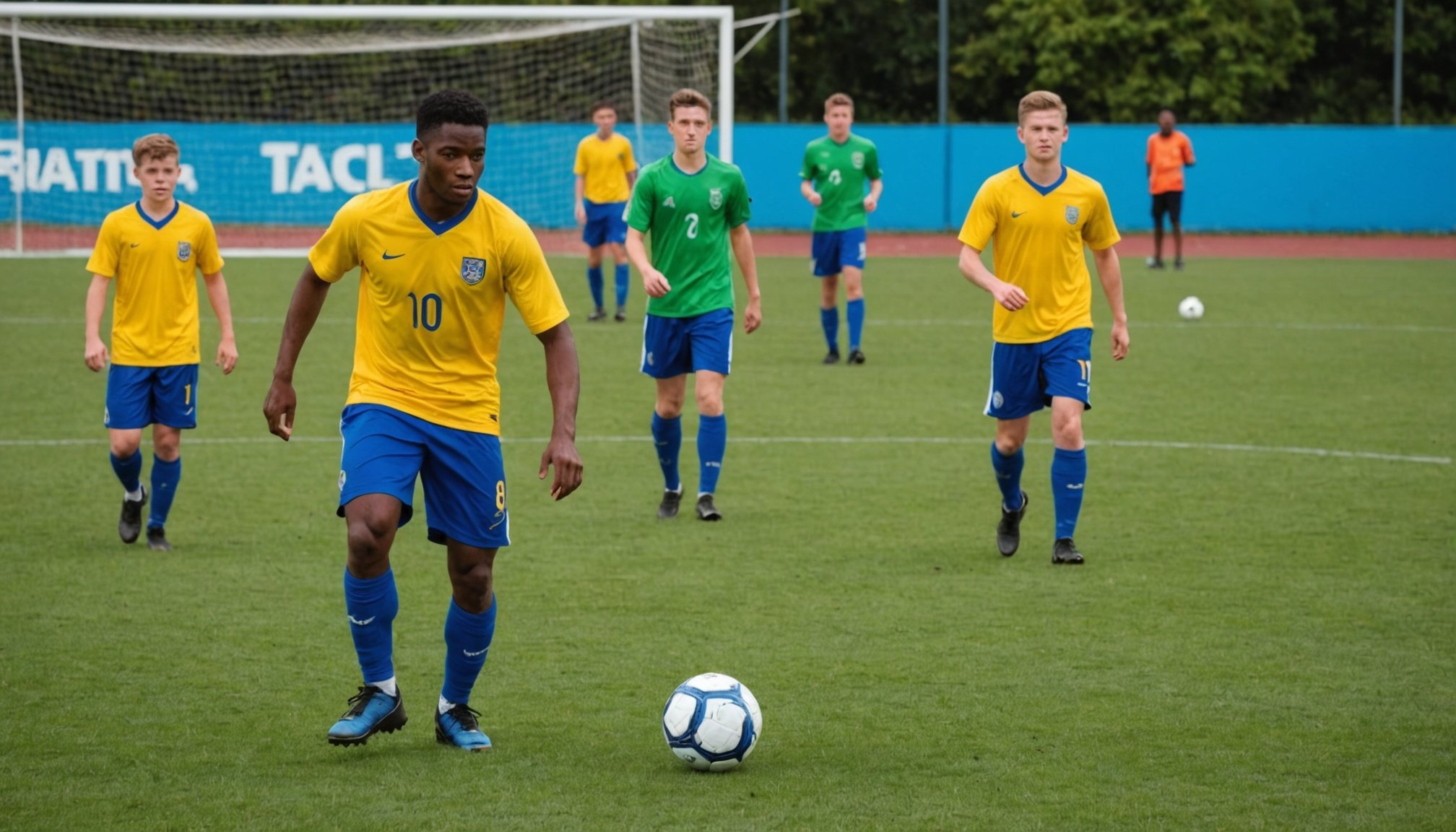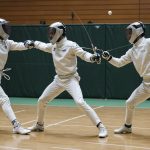Unique Challenges Faced by Left-Handed Players
Left-handed players often grapple with unique challenges in football, a sport predominantly oriented around right-handed individuals. Statistics reveal that a smaller percentage of left-handed athletes participate at the highest levels, partly due to football inclusivity practices not entirely addressing their needs. This underrepresentation can lead to systemic challenges in the field.
One prevalent misconception is that left-handedness in sports doesn’t warrant special consideration. However, unconventional playing styles offered by left-handed players can be advantageous, creating unpredictability for opponents. Their distinct perspective on the field allows them to exploit angles and spaces differently, often surprising right-handed defenders.
Also to see : Seamless integration: effective techniques for football clubs to successfully welcome new players
Despite these advantages, left-handed players frequently encounter training barriers as many programs lack specific drills accommodating their needs. Traditional methods may inadvertently favour right-handed strategies, neglecting the football training inclusivity essential for left-handed athletes to fully harness their potential.
To combat these challenges, it’s crucial to promote football inclusivity and dispel myths about left-handed limitations. Understanding the specific skill sets and advantages that come with left-handedness can enrich training approaches, ultimately benefiting teams. Clubs incorporating more inclusive training methods can break down these barriers, fostering a more equitable and diverse sporting environment.
In the same genre : Revolutionizing fan engagement: cutting-edge marketing tactics for football clubs to attract new supporters
Barriers to Equitable Training Opportunities
Equitable training opportunities for left-handed players in football are often hindered by systemic issues within football clubs. Many clubs have not yet optimised their training frameworks for inclusivity, inadvertently neglecting the needs of left-handed athletes. These trainings focus predominantly on right-handed techniques, creating a gap in providing comprehensive football training inclusivity.
Training barriers arise when systems fail to integrate drills and exercises tailored for left-handers. Such oversight can stifle the performance of these players, as it doesn’t leverage their unique abilities. This lack of accommodation extends to coaching staff who may be unaware of the necessity for diverse methodology in training.
Awareness and education among coaches is crucial. By understanding the nuances of different playing styles, coaches can curate programmes that highlight left-handed players’ strengths. Incorporating varied skill sets into their training regimes can create an enriching experience that allows left-handed athletes to thrive alongside their peers.
Breaking down these barriers requires not only logistical changes but a cultural shift within clubs. Recognising the potential and specialties of left-handed players fosters a supportive environment where all athletes can achieve their highest potential.
Success Stories of Inclusive Practices
Inclusive training practices in football have celebrated several success stories, demonstrating the significant impact of specialized programs. Clubs such as FC Platinum in Zimbabwe have excelled by implementing strategies aimed at equitably incorporating left-handed players. Through tailored training programs, these clubs have not only enhanced overall team performance but also boosted individual achievements. This adaptability empowers athletes to perform at their best, irrespective of playing style.
Case studies reveal that clubs embracing inclusivity can substantially benefit. They provide an environment where left-handed players thrive, offering structured support that acknowledges unique abilities. These programs frequently adapt drills and exercises to better suit left-handed techniques, pivoting away from traditional methods that ignore diverse needs.
Testimonials from players highlight the remarkable difference tailored training has made. These stories emphasize the importance of feeling supported and understood within a team setting. Left-handed athletes often credit their success to the inclusive policies of their clubs, noting improved skills and heightened morale.
The achievements of left-handed players within these inclusive frameworks underscore the practicality and necessity of such programs. Promoting diverse training approaches not only levels the playing field but also enriches the sport as a whole, fostering a culture of football inclusivity.
Tips for Coaches to Accommodate Different Playing Styles
Coaches have a pivotal role in ensuring training diversity to support all athletes, including left-handed players. Employing coaching tips that incorporate inclusive drills can significantly enhance the participation and performance of players with unconventional styles. By designing exercises that specifically address the needs of left-handed athletes, coaches can promote a more balanced and effective training environment.
One strategy is to create flexible training methodologies, allowing for adjustments in drills to accommodate left-handed methods. This might include reverse drills, which mirror traditional movements but suit left-handed players better. Coaches should encourage a team environment where both left- and right-handed techniques are practised and valued, fostering mutual respect among players.
Moreover, investing in resources and training programs focused on training diversity can educate and equip coaches with the necessary skills to nurture every player’s potential. Online courses, workshops, and seminars on inclusivity in sports are valuable tools for broadening a coach’s expertise.
Incorporating these practices not only benefits left-handed players by validating their unique skills but also enriches the overall team dynamic. Inclusive coaching ultimately builds a more cohesive team prepared to tackle diverse challenges on the pitch, leading to heightened success and morale.
Examples of Football Clubs Championing Inclusivity
In the world of football, some clubs have become exemplars of inclusive football clubs, pioneering equitable opportunities for left-handed players. These clubs are recognised for adopting football clubs initiatives that promote diversity and inclusivity both on and off the field.
One notable example is the English club Southampton FC, which has implemented inclusive training techniques that ensure left-handed players receive the same opportunities to thrive. Their innovative programs are tailored to accommodate different playing styles, making them a beacon of football inclusivity. This sets a benchmark for other clubs seeking to create an inclusive environment.
European clubs like Ajax Amsterdam have also introduced significant initiatives promoting equitable opportunities. Ajax’s approach includes comprehensive training schemes and the support of left-handed players through personalized coaching strategies. This integration extends to scouting processes, where diversity is celebrated.
The role of community support cannot be overstated; it plays a vital part in nurturing inclusive environments. Community-backed clubs foster a culture of acceptance and adaptability, providing robust frameworks for inclusivity that are supported from grassroots levels up to professional arenas.
Through these examples, it becomes clear that fostering inclusivity within football clubs benefits not only the athletes but the sport’s culture as a whole.
The Importance of Inclusivity in Sports
Inclusivity in sports is paramount for harnessing diverse talents and enhancing overall team performance. A plethora of statistical evidence underscores that inclusive environments result in better outcomes for athletes and teams alike. Studies consistently show that teams embracing diversity in football tend to exhibit improved problem-solving skills, creativity, and adaptability. This collective diversity enables teams to develop innovative strategies that might not emerge in homogenous groups.
Broader societal impacts of equitable training opportunities are evident as they can bridge social gaps and foster communal harmony. When sports organizations prioritize inclusivity, they challenge stereotypes and cultivate a culture of acceptance and respect. Such initiatives contribute to breaking down barriers, promoting social cohesion beyond the football field.
Looking ahead, future trends in inclusivity within sports organizations and clubs are likely to focus on personalized training, recognizing individual strengths irrespective of dominant demographic trends. The implementation of technologies that customize training regimens for every athlete—based on their physical and psychological profiles—can enhance inclusivity further. Clubs are encouraged to adopt these forward-thinking strategies to stay relevant and competitive. Ultimately, the commitment to inclusivity ensures that all athletes, regardless of differences, have equal opportunities to excel.











